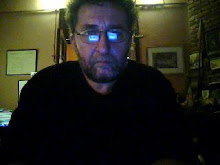This is the first international cultural movement that was conceived and launched from Argentina to the world. Featuring a clear and unique artistic approach towards drawing, painting, sculpture, architecture, music, poetry, theatre, novel and story literature and dance this movement began in the city of Buenos Aires during the mid 1940s.
The first concrete manifestations of this particular movement in the River Plate area were seen in the local specialized magazine Arturo, known as the first local abstract art magazine. The key word in the new movement was a break within the figurative tradition. Some of the most original inputs in this movement were the concepts of invention as artistic aesthetic method and irregular or trimmed frame, for the lei motive of the group was to break the representation line in art, in favor of the idea of presenting the work of art as an object itself, showing its very own elements without any further reference to reality but its own self. The group of local artists published their manifesto in the only number issued of Arturo Magazine, latter on communication was established thru Movimiento de Arte Concreto-Invencion during 1945, as they worked on freeing Men from all restrains.
The group of artists and its most famous followers were:
Rhod Rothfuss, Juan Bay, Esteban Eitler, Diyi Laañ, Valdo Wellington, Arden Quin, Rodolfo Uricchio, Anibal J. Biedma, Paulina Ossona, H. J. Koellreutter, Renate Shottelius, Gyula Kosice, Nelly Esquivel, J. P. Delmonte, Lorin Kaldor, Maria Bresler, Abraham Linenberg, Salvador Presta, Guillermo Gutierrez, Beatriz Herrera, Eduardo Sabelli, Masami Kuni, Antonio Llorens, Mirta Sessarego, Nair Oliveira, M. Tanaka, Jorge Nuñez, Horacio Faedo, Ana Maria Bay, Augusto Elmore, Muñoz Cota, Jorge Rivera, Ricardo Humbert, Sandu Darie, Nicolas Kasak, Esteban Fassio, Alberto Scopelliti, Lisl Steiner, Charles Portin, Marcos Fridman, Gina Ionesco, Jorge Bacacorzo, Aldo Prior, Isa Muchnik, Ricardo Pereyra, Ademar Sanchez, Alberto Hidalgo, Grete Stern, Juan Carlos Paz, Ramon Melgar, among others.
The group’s first shows took place at private spaces such as the house of the famous social psychologist Enrique Pichon-Riviere and the German photographer Grete Stern who was an active collaborator.
Their concept was the idea of an open artistic zone that embraced several expressive fields at once. A true example of this in MADI was their show in 1946 at the French Institute of High Studies, where the group showed their manifesto together with paintings, sculptures, poems, architectural models as well as music and dance shows. MADI blended the emphasis on plural expressions with a free playful attitude, focusing the accent on the sense of movement.
The origin of the movement’s name comes from a famous saying amongst Republican Spaniards during the civil war: Madri, Madri, no one will pass.
These are some of MADI’s absolute inventions
1. Irregular and trimmed framework
2. Articulated painting
3. Sculpture with articulated, linear and universal movement
4. Invented poetic proposition
5. Pure conceptual events
6. Pan interval music composition
7. Substitution of the interpreter in favor of the compositor
8. Movable and displacing architecture
Madi proposess
9. Radiating of the language the word "statue" and what represent in public places and parks.
10. Taking down all the “pictures”
11. Make musical poetry dynamic, easy and associative metaphor
12. Annex with space and time
13. Outrageously promote the essential
14. Create unalterable conditions that the work of art would alter, agitate, and improve the community’s conscience.
15. Display the imagination prosperously and combine it with the severity of mathematic reasoning
16. Always aim towards knowledge, never taking it for granted
17. Build, invent within madism new relationships.
As part of MADI ART 60th anniversary celebration there are three public events featuring two shows and a stroll along Florida Street with MADI scheduled fro the last days of August.
The first appointment i son Wednesday 2nd of Augusta t the Centro Cultural de España en Buenos Aires (CCEBA) 7 PM, “Factoria Madi - Documentation”, an exhibit featuring documents and photography that testimony the development of the movement from 1946.
The second event is the opening of a MADI movement participant’s works at the Federico Klemm foundation on August 24th.
Bob Frassinetti, art and antique dealer and journalist from Buenos Aires Argentina
So if you are interested in buying Art or Antiques, and you are thinking of travelling to Argentina please feel free to email us…….. Please feel free to contact Flor Rodriquez by emailing her: Email: Flor Rodriguez. or Bob Frassinetti: For more information: Email: Bob Frassinetti. Press here to see all topics on Art, Antiques and Travel Information for Buenos Aires & Argentina:Daily Updates on Art, Antiques, Collectibles as well as travel information for Buenos Aires, Argentina. Phone me thru Skype, ID: Bob Frassinetti or you can also chat with me thru Yahoo, press here:
Yahoo Contact
Bob Frassinetti Copyright 2006 Roberto Dario Frassinetti
Yahoo Contact
Bob Frassinetti Copyright 2006 Roberto Dario Frassinetti



